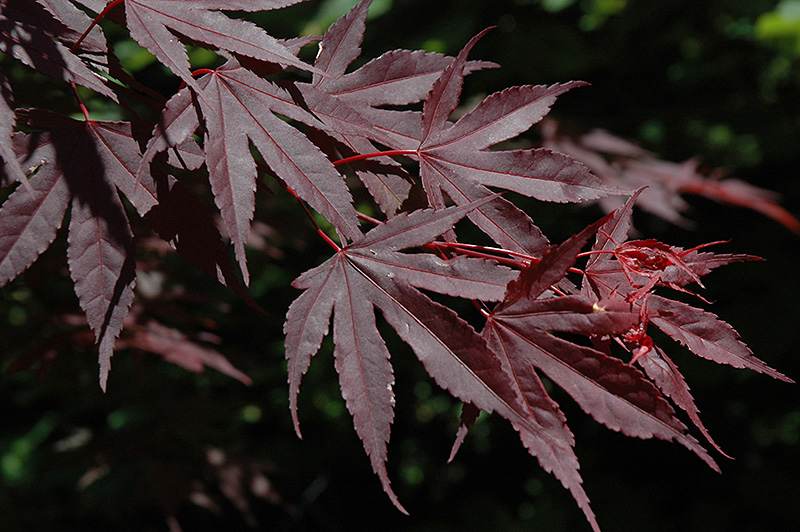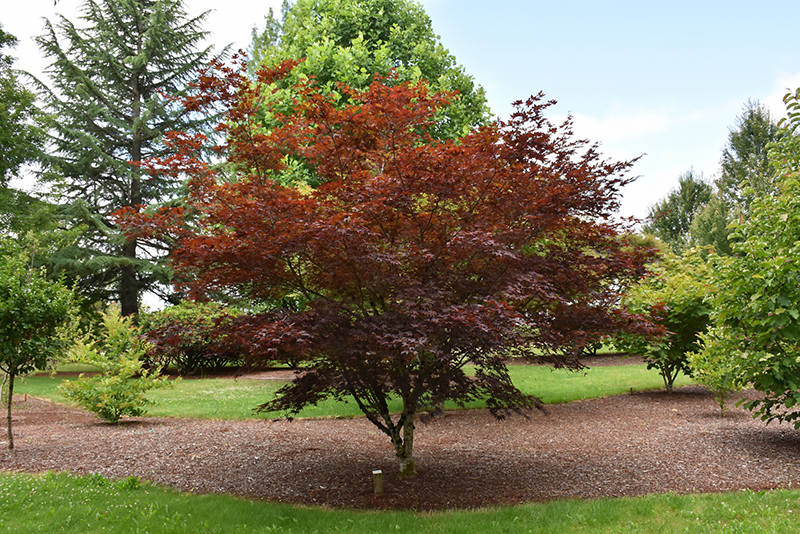>> Home
Crimson Prince Japanese Maple
Acer palmatum 'Crimson Prince'
Height: 15 feet
Spread: 12 feet
Sunlight:
![]()
![]()
Hardiness Zone: 4
Description:
An improved selection of the popular Bloodgood maple with richer red foliage that is more resistant to heat scorch so it tends to perform better in hot sun; dazzling fall color; a medium-sized accent tree for the smaller home landscape
Ornamental Features
Crimson Prince Japanese Maple is primarily valued in the landscape for its ornamental upright and spreading habit of growth. It features subtle corymbs of red flowers rising above the foliage in mid spring before the leaves. It has attractive red deciduous foliage. The small lobed palmate leaves are highly ornamental and turn an outstanding crimson in the fall. The rough gray bark and red branches add an interesting dimension to the landscape.
Landscape Attributes
Crimson Prince Japanese Maple is a dense deciduous tree with an upright spreading habit of growth. Its relatively fine texture sets it apart from other landscape plants with less refined foliage.
This is a relatively low maintenance tree, and should only be pruned in summer after the leaves have fully developed, as it may 'bleed' sap if pruned in late winter or early spring. It has no significant negative characteristics.
Crimson Prince Japanese Maple is recommended for the following landscape applications;
- Accent
Planting & Growing
Crimson Prince Japanese Maple will grow to be about 15 feet tall at maturity, with a spread of 12 feet. It has a low canopy with a typical clearance of 3 feet from the ground, and is suitable for planting under power lines. It grows at a medium rate, and under ideal conditions can be expected to live for 60 years or more.
This tree does best in full sun to partial shade. It prefers to grow in average to moist conditions, and shouldn't be allowed to dry out. It is not particular as to soil pH, but grows best in rich soils. It is somewhat tolerant of urban pollution, and will benefit from being planted in a relatively sheltered location. Consider applying a thick mulch around the root zone in winter to protect it in exposed locations or colder microclimates. This is a selected variety of a species not originally from North America.

